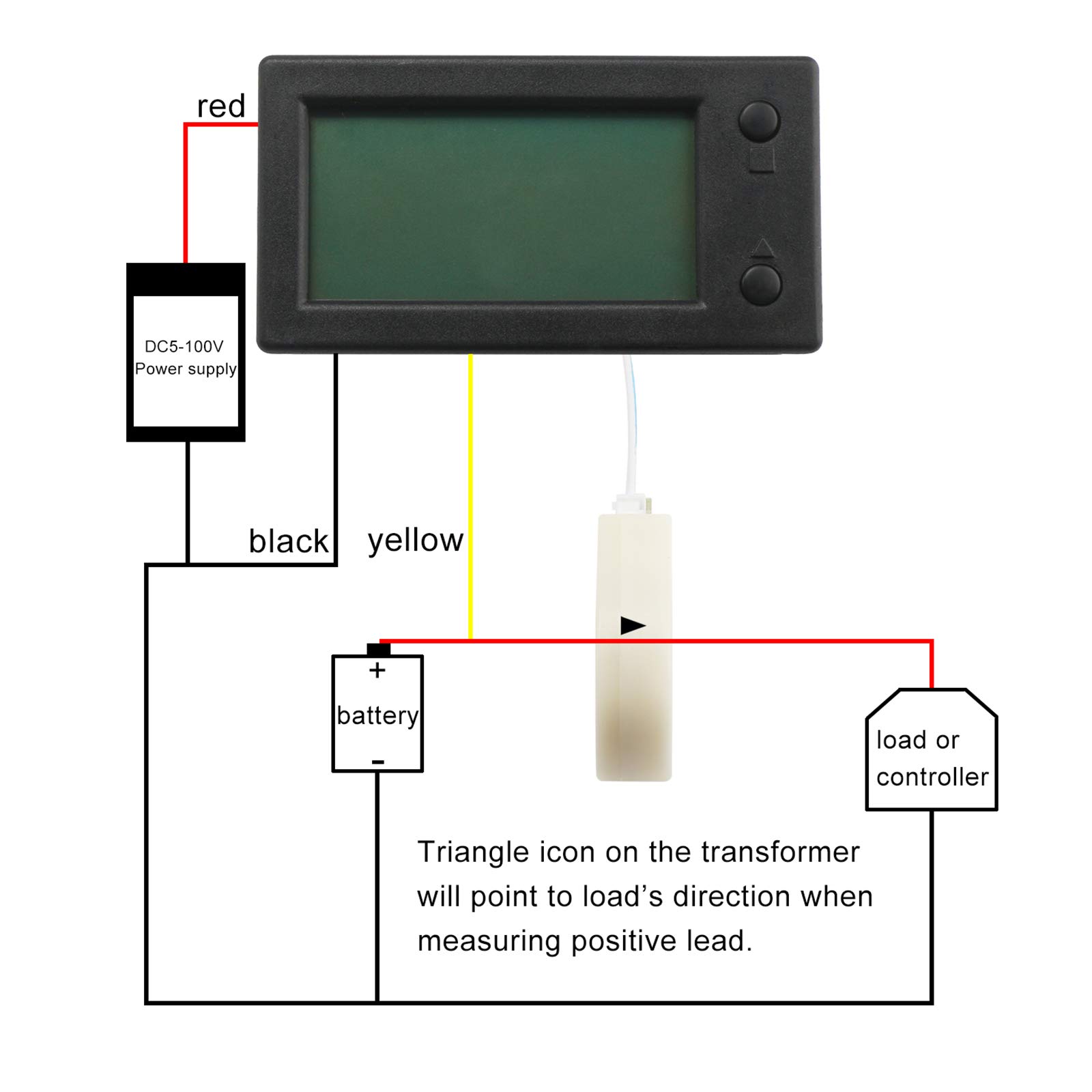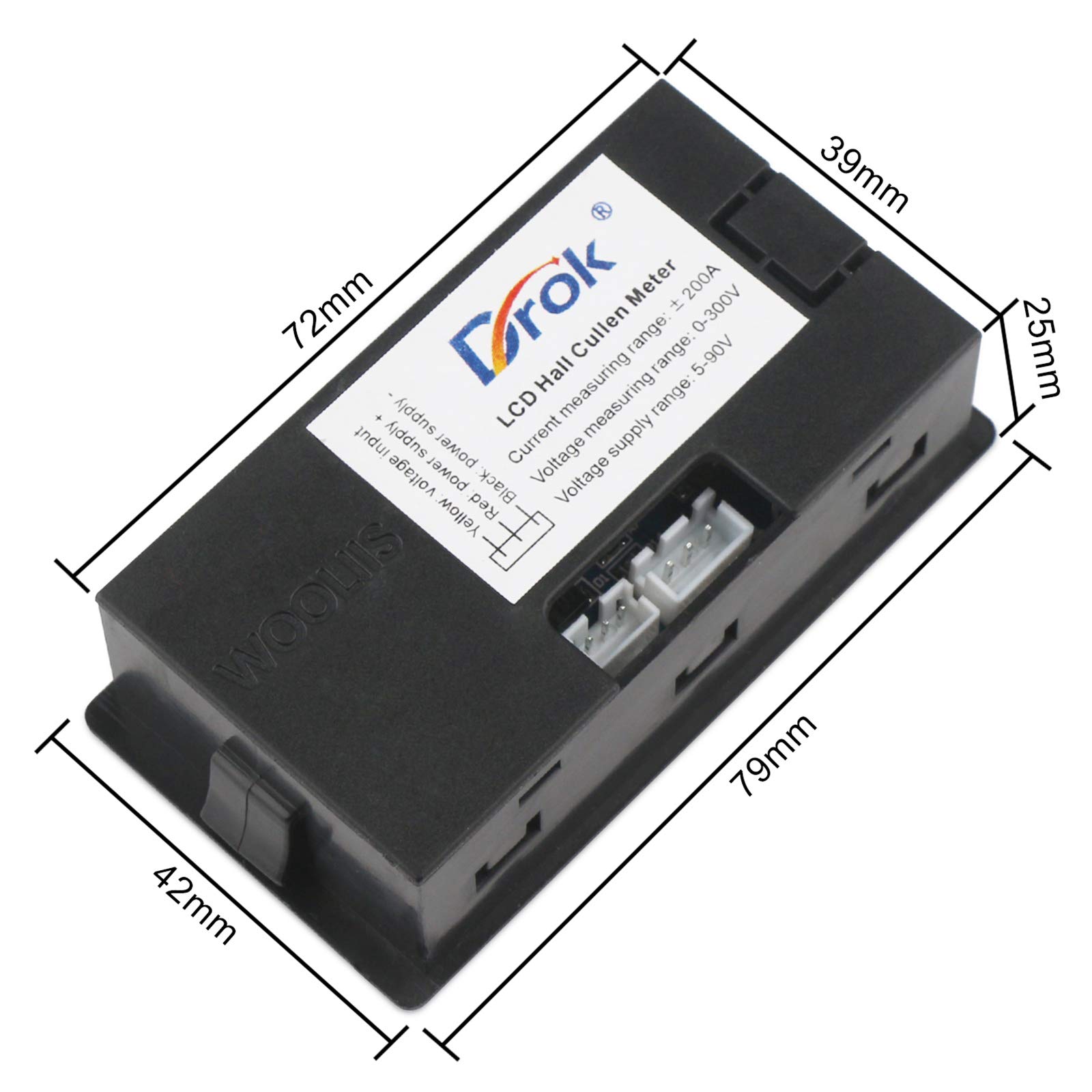







🔌 Power Up Your Monitoring Game!
The DROK Battery Monitor is a cutting-edge multimeter designed to measure voltage, current, and battery capacity with precision. Featuring a robust STN LCD display and a reliable Hall sensor, this device is perfect for professionals needing accurate data in various lighting conditions. With a wide measurement range and smart alarming functions, it’s the ultimate tool for monitoring all types of batteries.
| Brand | DROK |
| Power Source | Battery Powered |
| Style | Digital |
| Colour | Black |
| Specification Met | CE |
| Measurement Type | Ammeter, Voltmeter, Multimeter |
| Maximum Operating Voltage | 300 Volts |
| Manufacturer | DROK |
| Item Weight | 132 g |
| Package Dimensions | 13.49 x 11.81 x 6.1 cm; 132 Grams |
| Are batteries included? | No |
P**N
Manual is not well written as there is a lot of info is missing
Rewrite of my review: I got some info wrong the first time.There are several settings that are not mentioned in the single sheet manual. I contacted Drok and they explained those are for other features that they do not support so ignore them.The product works pretty well considering the price. I have only used it now for a short time on my golf cart but it appears fairly accurate. (remember, it's only $40).My biggest issue is that I wish the battery remaining % and Ah numbers were bigger. That is an old pair of eyes issue and not so much the fault of the meter. ha ha..Drok says they have used up to a 10m shielded cable to allow the Hall sensor to be located further away.
S**E
Worth every penny you spend!
Worked exactly as I expected it to. Nice to know the actual amount of Amps being used on different sources. It came with three choices in length of wire depending on your situation which helped me finish my job properly. I would purchase this product again and highly recommend it. It even has a controlled switch if you choose to have the light on or off to see better.
L**E
Not a precision instrument, but good enough. Shows the info I need for my camper.
Compact multi-meter, easy to install. Display is easy to read even with the backlight off. Hall effect sensor makes it easy to measure a circuit with a single +12VDC feed, but multiple grounds (wired and chassis). 20mm hole is plenty big enough for my 4 Ga cable.Readings are close enough to my Fluke that I can use it to keep track of what I need at a glance. Just installed it, so can't yet comment on stability over time. The attached photos are of the meter after calibrating the Hall sensor to zero; then with fans, gas sensor, dash cam and GPS connected (800ma) but no WH yet. (dash cam and GPS on stand-by, so minimum current - solar charging system has battery bank on 13.7V float)This unit came with a printed instruction sheet that is the same one available for download on the Amazon page. Wiring is straight forward for a 12V system, just +12VDC and ground. Button usage and parameter setting is a learning experience, but got it after a few tries.The instruction sheet could be better; phrasing and vocabulary required some translation, and the parameter setting seems incomplete. The instructions describe setting five (5) parameters (see attached photos):AHX XX.X - AmpHour capacity of battery bank, 430.0 in the photoFUX XX.X - Full Voltage for the batteries (U is seven-segment for V), 12.8 in the photoHUX XX.X - High Voltage (over-voltage) for alarm, 15.4 in the photoLUX XX.X - Low Voltage for alarm, 10.8 in the photoHAX XX.X - High Amp (over-current) for alarm, 125.0 in the photoAll good.....but.....there are three more parameters that are not mentioned in the instructions:CUX XX.X - not described, but the reading matches the cumulative energy (WH) as of this photoAAX XX.X - not described, but the reading matches the current as of this photoAUX XX.X - not described, but the reading matches the voltage as of this photoNot sure if these can be set, or if setting them changes anything. Didn't try. Maybe a way to calibrate without disconnecting things, maybe just lazy programmers? Something for the DROK product expert to explain. True fans would like to know.....So, overall, not perfect but worth the money for my installation (if it holds up).
A**R
Now I can Tell How Much Battery My Trolling motor Has Left
Thanks to a U-tube video setup was easy. Remember to zero out every time you recharge your battery. No longer have to wonder whether I'm going to make it back to the launch. Use it with 24lb Watersnake trolling motor, 50 AH Lithium Ion Battery, on a 14-foot Hornbeck canoe. Top speed 4.3 mph. Range at the speed about nine miles.
E**W
Great inexpensive gauge, pos and neg current readings, does everything I want
I did a rewiring project for my camper's battery & solar charging system and wanted to install some ammeters while I was at it. I went with Hall sensors vs shunt sensors for convenience. This sensor is great because it offers bi-directional measurement, I didn't realize that this was actually kind of hard to track down with many other meters not indicating positive or negative direction. This meter does show either positive or negative current flow. I installed it on the main feed from my battery so I can tell what the load is on the batteries. I installed a second sensor (green number gauge in pic, also a Hall sensor) on the solar output from the CC. I do not have a way of confirming the absolute accuracy of the ammeter, but it does show numbers consistent with what I'm expecting (0 when there would not be a load, consistent with the solar output current vs other simultaneous camper loads, reads about what I expect when applying a load with a rough estimate of the current required). I concur with other reviews that the manual is hard to decipher. It does tell you the right things to do, but it is not intuitive and even though I felt I was following directions I had a hard time getting my initial setup how I wanted. And the manual does not go through what all the menu options are, some of which are calibrations so you need to be careful about what you are changing. After making a change, press and hold the menu button to save the change.
Trustpilot
2 months ago
1 month ago